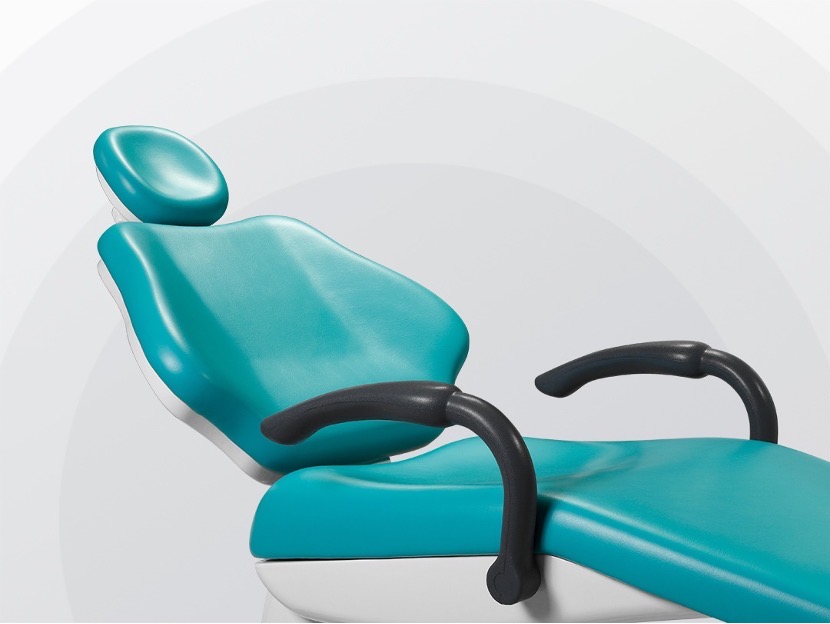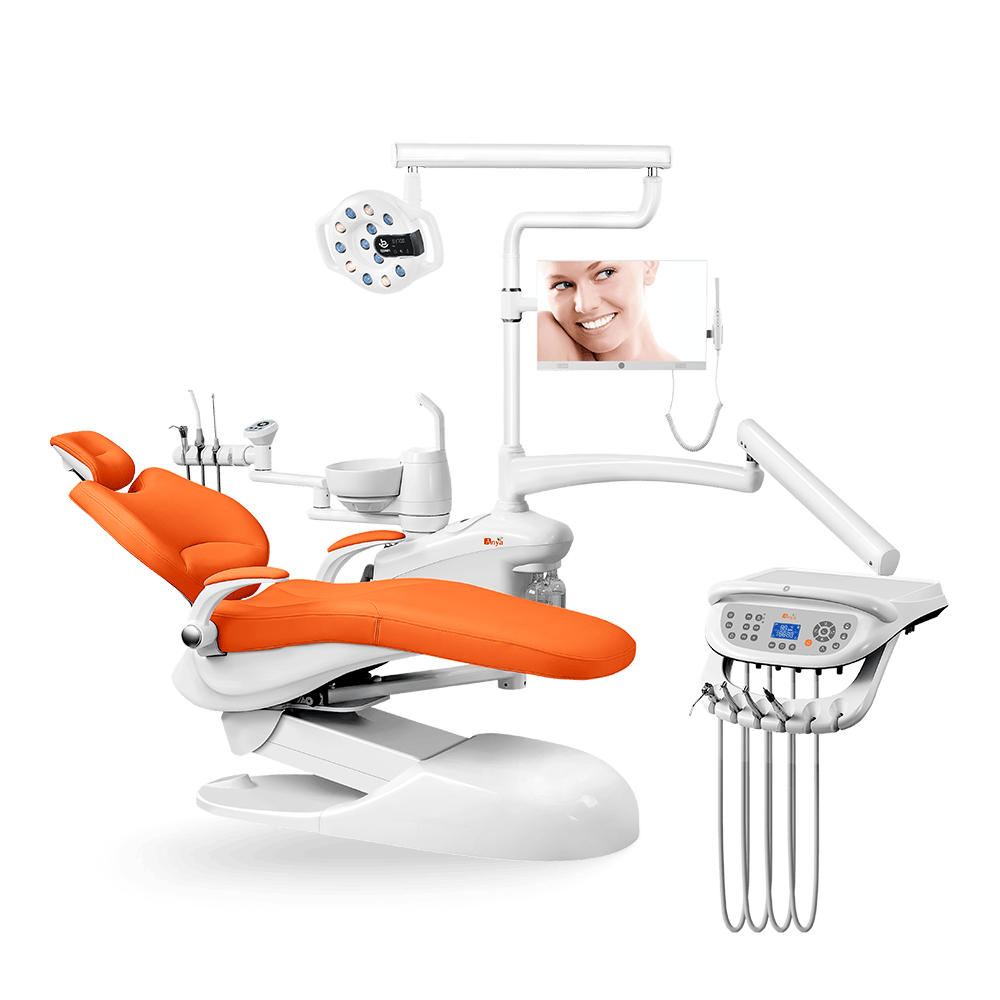When you walk into a modern dental practice, what’s the first thing that catches your eye? More often than not, it’s the dental chair – that sophisticated piece of equipment that serves as the foundation for every procedure. But have you ever wondered what makes some chairs feel remarkably comfortable while others leave patients shifting uncomfortably throughout their treatment?
The answer lies in something most people take for granted: upholstery materials and their underlying science. As dental technology advances at breakneck speed, the materials that directly touch patients have evolved from simple vinyl coverings to engineered surfaces that actively contribute to treatment success.
The Hidden Science of Patient Comfort
Why Material Selection Matters More Than You Think
Modern dental chair upholstery isn’t just about looks – it’s a carefully engineered system that addresses multiple clinical challenges simultaneously. To be honest, many practitioners underestimate how profoundly upholstery quality impacts their practice’s success. From infection control compliance to patient retention rates, these materials work behind the scenes in ways that directly affect your bottom line.
Consider this: a patient’s comfort level during the first five minutes of their appointment significantly influences their perception of your entire practice. It’s worth noting that uncomfortable upholstery can trigger anxiety responses that make even routine cleanings more challenging for both patient and practitioner.

The AY-A3000 dental chair, for instance, demonstrates how thoughtful material engineering creates what patients describe as a “surprisingly supportive” experience. The ergonomic design follows human body contours while incorporating antimicrobial properties that work around the clock – not just during cleaning cycles.
The Evolution of Dental Upholstery Materials
Surprisingly, the journey from basic vinyl to today’s sophisticated materials reveals a fascinating intersection of chemistry, biomechanics, and infection control science. Traditional materials served their purpose, but they often created more problems than they solved.
Standard vinyl upholstery, while economical, presents several challenges in professional environments:
- Limited chemical resistance to cleaning agents
- Tendency to crack and harbor bacteria in crevices
- Poor pressure distribution leading to patient discomfort
- Average lifespan of roughly three years under clinical conditions
What changed everything was the recognition that upholstery materials could be active participants in patient care rather than passive coverings. This shift led to the development of engineered surfaces that contribute positively to clinical outcomes.
Material Science Fundamentals: Beyond Surface Appearance
The Chemistry of Comfort and Cleanliness
Why do some materials feel inherently more comfortable than others? The answer lies in molecular structure and surface engineering. Medical-grade synthetic leather represents a significant leap forward from conventional alternatives, incorporating complex polymer matrices designed specifically for healthcare environments.
As a manufacturer that’s worked with thousands of dental practices since 2007, we’ve noticed that practitioners often focus on visible features while overlooking the material science that makes those features possible. The nano-coating technology used in premium chairs like the AY-A8000 model creates surfaces that are simultaneously:
- Self-healing at the microscopic level
- Antimicrobial through continuous action
- Stain-resistant without sacrificing tactile comfort
- Chemically stable under intensive cleaning protocols
| Material Type | Chemical Resistance | Comfort Rating | Average Lifespan | Maintenance Intensity |
|---|---|---|---|---|
| Standard Vinyl | Moderate | Basic | 2-4 years | High |
| Medical PVC | Good | Enhanced | 4-6 years | Moderate |
| Synthetic Leather | Excellent | Superior | 7-10 years | Low |
| Nano-Coated Materials | Outstanding | Premium | 8-12 years | Minimal |
Understanding Pressure Distribution Technology
Have you ever wondered why some patients can comfortably remain in position for extended procedures while others seem to fidget constantly? The secret lies in pressure distribution engineering – a field that combines materials science with biomechanical understanding.
Advanced upholstery systems incorporate high-density memory foam cores that adapt to individual patient anatomy. The AY-A1000 entry-level chair demonstrates how even budget-conscious practices can benefit from these technologies. Its ergonomic seamless interior with optional fine fiber leather shows that comfort doesn’t always require premium pricing.
Interestingly, the backrest elevation range of 450-900mm in the AY-A1000 allows for precise positioning that accommodates various body types while maintaining optimal pressure distribution. This level of adjustability, combined with thoughtful material selection, addresses one of the most common patient complaints about dental visits.
Infection Control: Where Material Engineering Meets Medical Safety
The Antimicrobial Revolution
What impact does this have on daily practice operations? Antimicrobial upholstery technology has fundamentally changed how we approach infection control in dental environments. Rather than relying solely on periodic cleaning, modern materials provide continuous pathogen resistance.
The science behind this involves incorporating antimicrobial agents directly into the material matrix. According to the Centers for Disease Control and Prevention, healthcare-associated infections remain a significant concern, making material-level protection increasingly important.
Taiwan Timotion motors and Italian ODE solenoid valves – components featured in Anya Medical’s premium chairs – work in harmony with advanced upholstery to create comprehensive infection control systems. These aren’t just marketing features; they’re engineered responses to real clinical challenges.
Real-World Application: A Case Study in Infection Prevention
Let me share what happened at a busy orthodontic practice in California. Dr. Martinez was dealing with frequent upholstery staining and accelerated wear patterns due to high patient volume. After upgrading to chairs with antimicrobial nano-coating technology, the practice experienced:
- Significantly reduced cleaning time between patients
- Virtually eliminated staining issues
- Extended upholstery lifespan by approximately one-third
- Improved patient feedback regarding comfort
To be honest, the transformation was more dramatic than even we anticipated. The seamless upholstery design eliminated the crevices where contaminants typically accumulated, while the antimicrobial properties provided continuous protection.
Another compelling example comes from a pediatric practice in Texas. The challenge? Young patients and inevitable spills. The solution involved chairs with detachable ceramic spittoons and specialized upholstery that could withstand frequent cleaning without degradation. The result was a practice environment that maintained its professional appearance despite intensive use.
Advanced Features: Integration of Technology and Materials
Smart Materials Meet Clinical Needs
Surprisingly, today’s upholstery materials can actively contribute to treatment precision. Butterfly-shaped metal backrests equipped with air springs – a feature of the AY-A3600 model – demonstrate how material engineering supports clinical excellence.

These designs aren’t aesthetic choices; they’re biomechanically optimized to provide stability during precise procedures. The thickened steel base construction works in concert with advanced upholstery to minimize micro-movements that could compromise treatment quality.
The Role of Ergonomics in Material Selection
Why is ergonomic design so crucial for modern dental practices? Beyond patient comfort, proper ergonomics directly impacts practitioner health and career longevity. Musculoskeletal disorders represent one of the leading causes of early retirement among dental professionals.
Advanced upholstery systems facilitate optimal positioning for both patients and practitioners. The narrow backrest design pioneered in chairs like the AY-A3000 allows clinicians to maintain proper positioning around the oral cavity without compromising their spinal alignment.
As we’ve observed from working with practices across diverse specialties, the integration of programmable memory positions with ergonomic upholstery creates workflows that reduce physical stress on practitioners while enhancing patient comfort.
Maintenance Protocols: Maximizing Material Longevity
Scientific Approaches to Upholstery Care
What’s the secret to maintaining that “new chair” appearance and performance throughout years of clinical use? It starts with understanding that different materials require distinctly different care approaches.
Nano-coated surfaces benefit from gentle, pH-balanced cleaning solutions. Surprisingly, these advanced materials often require less aggressive cleaning than traditional alternatives while achieving superior results. The self-healing properties mean that minor surface damage repairs itself over time.
For practices using synthetic leather upholstery, the key is avoiding oil-based products and excessive moisture exposure. Regular treatment with manufacturer-approved conditioners maintains flexibility and stain resistance throughout the material’s extended lifespan.
Technology-Assisted Maintenance
Modern practices increasingly utilize automated cleaning systems that adjust protocols based on material type and contamination level. Some advanced chairs incorporate intelligent disinfection systems that provide one-step sterilization while protecting material integrity.
The UV-C sterilization capability found in premium models offers pathogen reduction exceeding 99.9% in roughly ninety seconds – all while eliminating the chemical exposure that traditionally contributes to material degradation.
Customization Options: Meeting Diverse Practice Needs
Specialty Practice Requirements
Different dental specialties present unique challenges that material selection must address. Implantology procedures demand extraordinary stability and precise positioning capabilities that place additional stress on upholstery materials.
Orthodontic practices require materials that maintain comfort during extended treatment sessions. The AY-A2000 addresses these needs through its butterfly-shaped backrest design that follows spinal curves while providing consistent support.
Pediatric dentistry presents its own material challenges. Enhanced stain resistance, safety considerations, and psychological comfort factors all influence material selection. Specialized features like the dental child’s seat cushion demonstrate how thoughtful engineering addresses these unique requirements.
Integration with Digital Workflows
How do modern upholstery materials support increasingly digital dental practices? Smart material technologies with embedded sensors can provide real-time feedback on patient positioning and comfort levels. This data integration enables predictive maintenance protocols that optimize material performance while minimizing practice disruption.
The convergence of artificial intelligence and material science presents opportunities for upholstery systems that learn from usage patterns and automatically optimize performance characteristics.
Economic Considerations: Total Cost of Ownership
Beyond Initial Purchase Price
Let’s talk numbers, but more importantly, let’s talk value. When evaluating upholstery materials, total cost of ownership tells a very different story than initial pricing alone. Premium materials with higher upfront costs often demonstrate superior long-term value through:
- Extended service life reducing replacement frequency
- Lower maintenance requirements saving staff time
- Enhanced patient satisfaction supporting practice growth
- Improved regulatory compliance reducing risk exposure
Real-world data from practices using advanced materials shows substantially reduced replacement cycles. Where standard vinyl might require replacement every three years, engineered materials often perform optimally for eight to ten years or more.
Risk Mitigation Through Material Selection
What’s the true cost of upholstery-related problems? Non-compliant materials carry significant financial risks including potential regulatory fines and malpractice insurance implications. Conversely, practices using properly specified materials report streamlined inspection processes and enhanced regulatory confidence.
The insurance implications alone justify investment in quality materials. Many providers offer premium reductions for practices demonstrating comprehensive infection control protocols, including material-level protection.
Future Innovations: What’s Coming Next
Emerging Technologies in Upholstery Materials
Shape-memory polymers represent an exciting frontier in dental chair upholstery. These materials maintain predetermined configurations under normal conditions but can temporarily adapt to specific patient requirements before returning to optimal positioning.
Biomimetic surface technologies draw inspiration from natural antimicrobial systems to create materials with enhanced pathogen resistance. Research into surface textures that naturally discourage bacterial adhesion could revolutionize infection control approaches.
Integration with Practice Management Systems
The future of dental upholstery lies in intelligent materials that communicate with practice management systems. Imagine upholstery that tracks usage patterns, predicts maintenance needs, and automatically schedules service appointments.
Sensor-embedded materials could provide real-time feedback on patient comfort, enabling automatic adjustments that optimize the treatment experience while supporting clinical precision.
Implementation Strategies: Making the Right Choice
Evaluation Framework for Material Selection
How do you navigate the complex landscape of upholstery options to find the perfect fit for your practice? Start with a comprehensive assessment of your specific requirements:
Practice volume significantly influences material selection. High-volume practices benefit from enhanced durability features, while specialized practices may prioritize specific performance characteristics over pure longevity.
Patient demographics also play a crucial role. Practices serving elderly populations might emphasize comfort and ease of positioning, while pediatric practices focus on safety and cleanability.
Staff Training and Optimization
Successful implementation of advanced upholstery materials requires comprehensive staff training on appropriate care protocols. Different materials demand specific cleaning approaches, and proper maintenance techniques directly impact material lifespan and performance.
Investment in proper cleaning equipment and supplies ensures that advanced materials deliver their promised benefits throughout their service life.
Conclusion: The Strategic Advantage of Advanced Upholstery
Dental chair upholstery has evolved far beyond simple comfort provision to become a strategic asset that influences every aspect of practice success. From infection control excellence to patient satisfaction and regulatory compliance, these engineered materials work continuously to support clinical excellence.
The material science behind modern upholstery demonstrates remarkable advancement in addressing the complex challenges of contemporary dental practice. Nano-coating technologies, antimicrobial properties, and ergonomic engineering combine to create solutions that deliver measurable benefits throughout their extended service life.
For practices committed to excellence in patient care and operational efficiency, investment in advanced upholstery materials represents a strategic decision that yields benefits extending far beyond immediate comfort improvements. The documented reduction in material failures and significant extension in service life achieved through proper material selection and maintenance protocols demonstrate the tangible benefits of evidence-based upholstery strategies.
As the dental industry continues evolving toward increasingly sophisticated care delivery models, upholstery materials will play an ever-more-critical role in enabling practices to meet rising patient expectations while maintaining operational efficiency and regulatory compliance. The practices that recognize upholstery as a strategic asset rather than a commodity will position themselves for sustained success in an increasingly competitive healthcare landscape.
The future belongs to dental practices that embrace advanced materials technology today, positioning themselves to adapt to tomorrow’s challenges while providing exceptional patient experiences that drive sustainable practice growth and professional satisfaction.
For comprehensive information about advanced dental chair options, explore Anya Medical’s complete product line or learn more about infection-resistant dental chair technologies.




